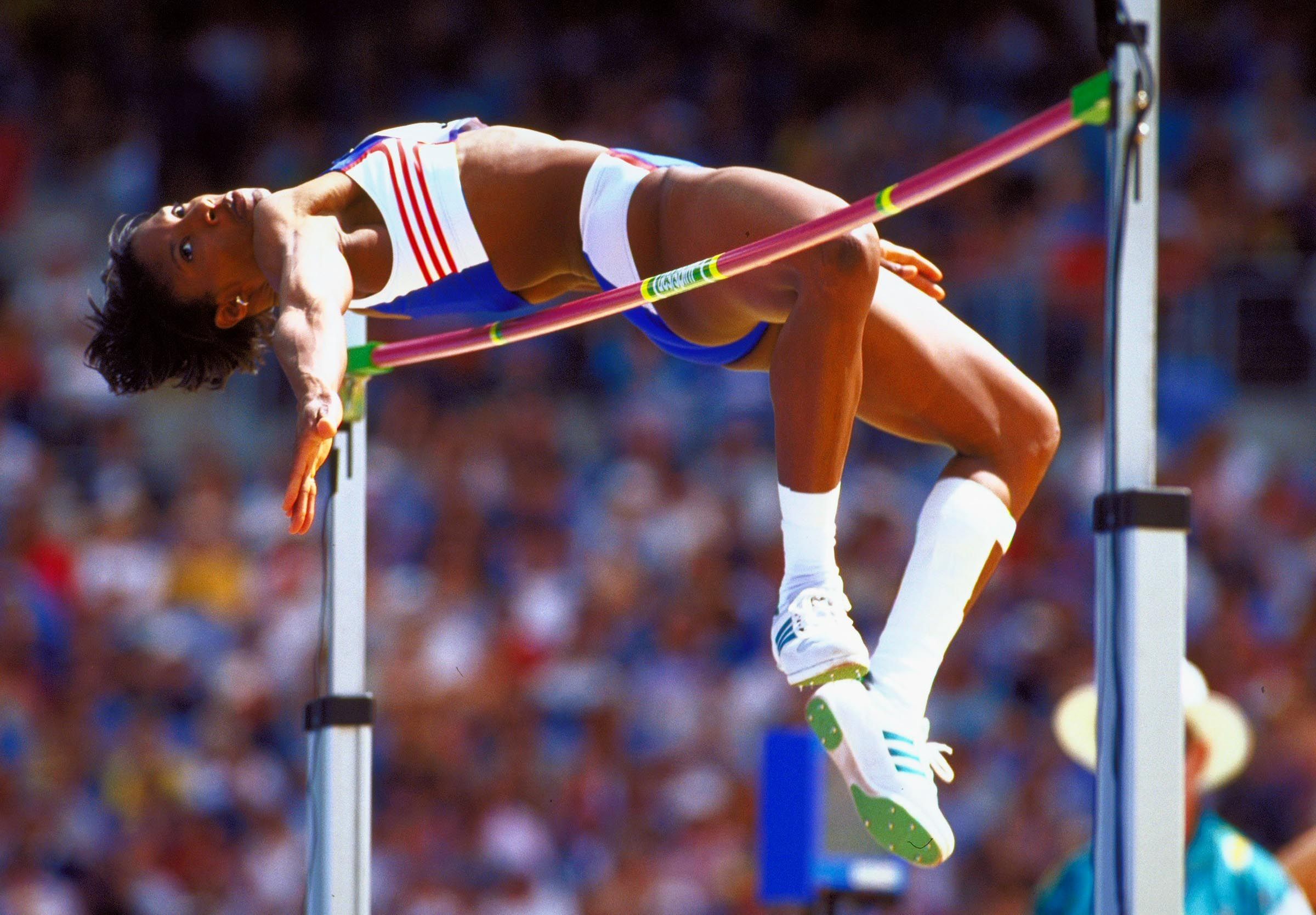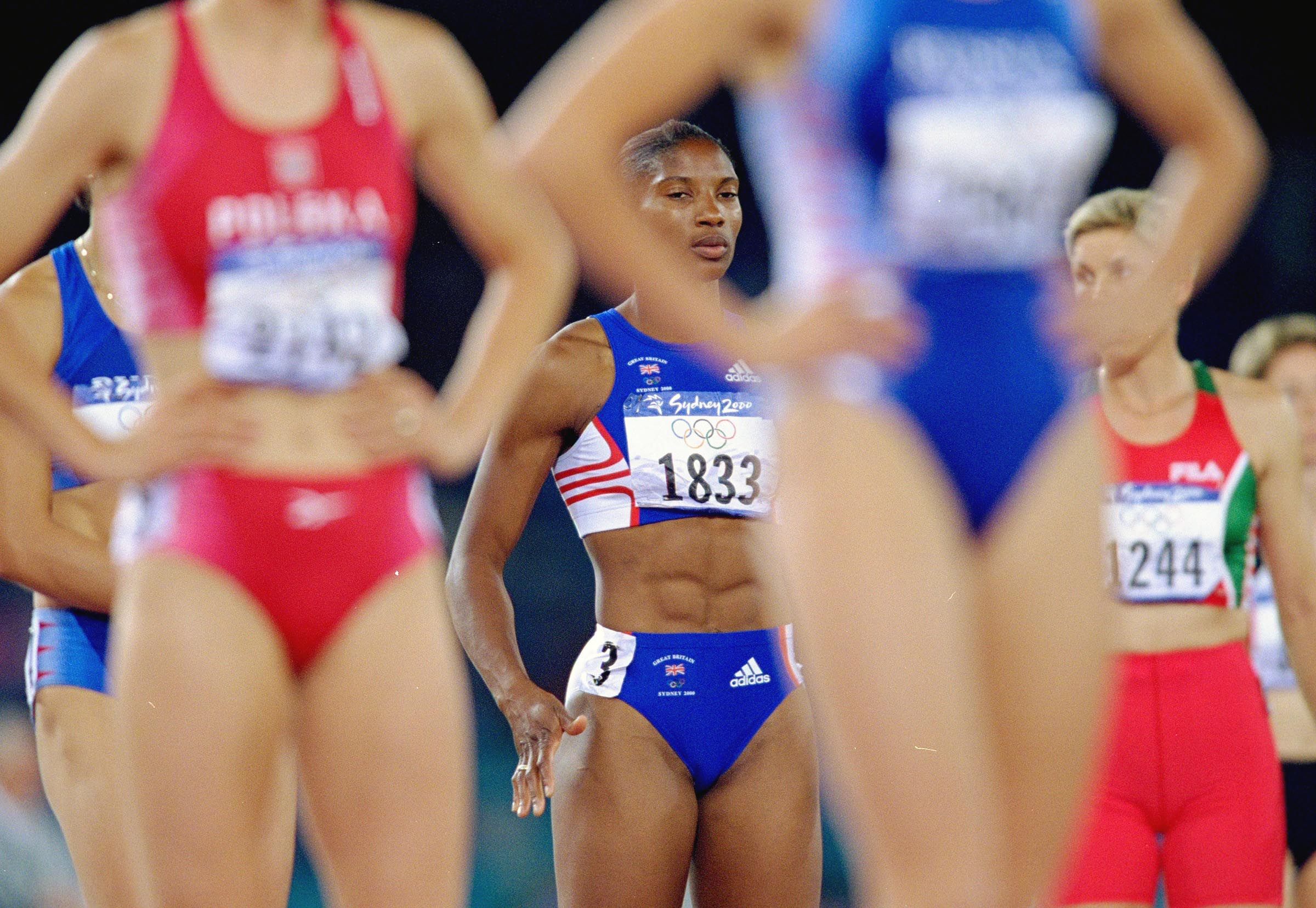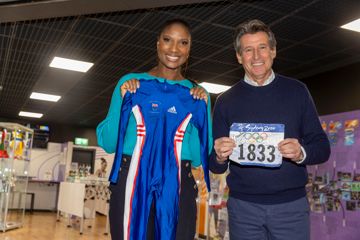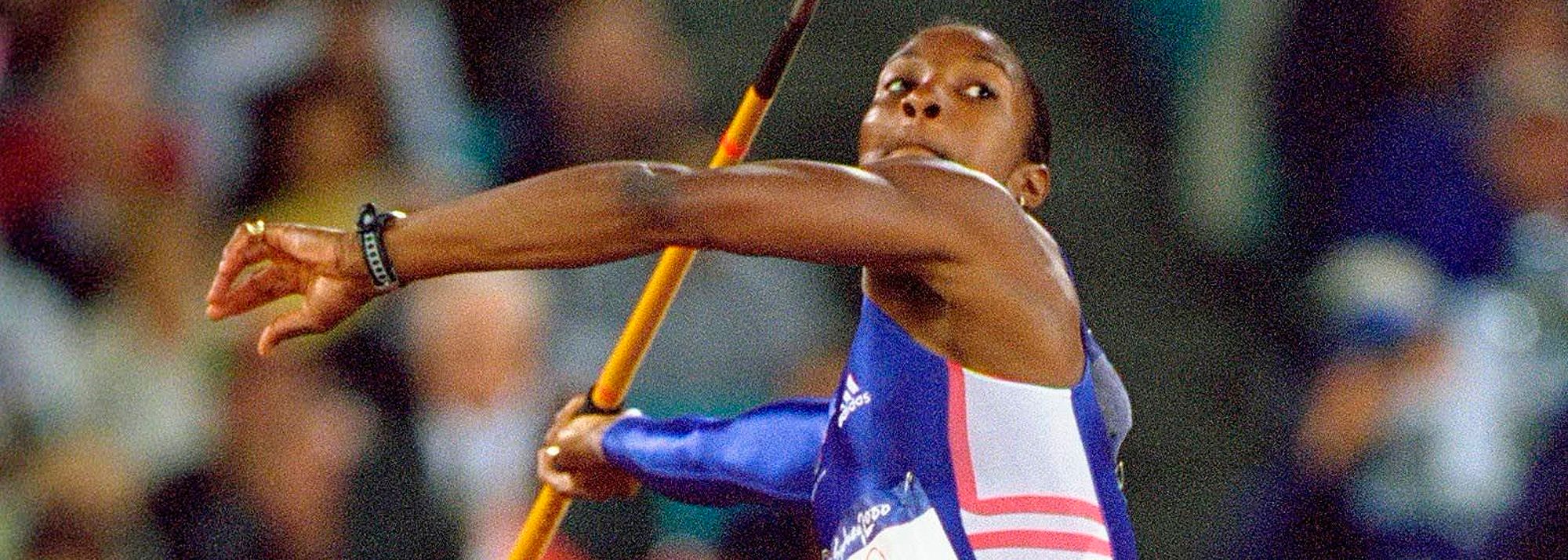Denise Lewis in the heptathlon javelin at the 2000 Sydney Olympics (© Getty Images)
As well as being a Dame of the British Empire and president of UK Athletics and Commonwealth Games England, Denise Lewis happens to be a mother of four children.
On the track in Stadium Australia on 24 September 2000, in the 2 minutes and 16.83 seconds that ultimately defined her athletics career, she could have passed for a different kind of mummy.
Swathed in bandages, the partially mummified Briton fought through the pain barrier in the final event of the Sydney Olympic heptathlon, the 800m, to complete her winning battle to reach the very pinnacle of her sport.
The autographed Sydney Olympic bodysuit and bib number that Lewis donated to the Museum of World Athletics (MOWA) earlier this year are reminders of the great British all-rounder’s most famous victory.
The woman from Wolverhampton in the English west midlands wore them both as the then 28-year-old showed her mettle to emerge from the heat of a punishing two-day contest with the prize of Olympic gold.
‘My body was hurting’
After sneaking on to the Olympic podium in Atlanta in 1996, earning the bronze by five points, she had shown promise of graduating to the top of the global combined events pile after taking the tough decision to relocate from the comfort zone of her training base in Birmingham.
Under Charles van Commenee in the Netherlands, mentally toughened by the astute guidance of the Dutch coach, Lewis landed world silver behind Germany’s Sabine Braun in Athens in 1997 and another as runner-up to Eunice Barber of France in Seville two years later.
The Olympic heptathlon in Sydney at the start of the new millennium was a chance for the burgeoning Briton to cut down the Barber of Seville and step up to gold medal standard on the global stage.
She started her summer campaign well, breaking her own British record with her 6831 victory at the prestigious Decastar meeting in Talence. But then, nine weeks before the Games, Lewis was struck by injury and was unable to train properly until a week before the Olympic heptathlon because of a badly damaged left achilles.
She also hurt her right foot – hence the profusion of bandages and tape helping to hold her together as she fought against the odds, and the opposition, in Stadium Australia.

Denise Lewis in the heptathlon high jump in Sydney (© Getty Images)
After the first two events, the 100m hurdles and the high jump, the European and Commonwealth champion was languishing in eighth place, 152 points behind Barber.
Then, however, Lewis unleashed a throw of 15.55m in the shot while Barber could only manage 11.27m. The Briton rocketed up the order to second, just 30 points behind new leader Natallia Sazanovich of Belarus; her French rival replaced her in eighth.
After the 200m, they stood third and seventh respectively at the end of day one but then the ailing Barber took just one attempt in the long jump and scratched from the competition.
Lewis jumped 6.48m to move within 67 points of Sazanocich, at the expense of aggravating her foot injury. She then played her trump card, hurling her javelin out to a PB of 50.19m.
Despite all of her ailments, Lewis was in the lead with only the 800m remaining. She needed to stay within 4.3 seconds of Sazanovich and within eight seconds of Russia’s Yelena Prokhorova.
Gritting her teeth, Lewis held on to first place, crossing the line in 2:16.83 – 6.51 seconds behind Prokhorova and just 0.42 down on Sazanovich.
Lewis took the gold with 6584, 53 points ahead of Prokhorova, who stepped up to silver, and 57 ahead of Sazanovich in the bronze medal position.
“I didn’t perform brilliantly to win that gold medal, but I did enough to win,” Lewis reflected in a recent interview on the BBC podcast Plenty of Fishers.
“I wanted to win. It didn’t matter what the score was. I wanted that gold medal, having been the bronze medallist in 1996.
“I was 28. My body was hurting. I’d had a lot of injuries. I needed to do enough.”
Van Commenee’s pivotal role
That Lewis possessed a fearsome competitive fire in her belly had been clear when she made her international breakthrough six years previously.
Jane Flemming was coasting towards her second successive Commonwealth heptathlon title in Victoria in 1994 until Lewis uncorked a mighty throw of 53.68m in the javelin, proceeding to pip the Australian favourite to gold by eight points.
She had been inspired in her youth by two role models on her doorstep, the Birmingham sprinter Sonia Lannaman, Commonwealth 100m champion in 1978, and Wolverhampton’s Tessa Sanderson, Olympic javelin champion in 1984 – and by her hugely supportive mother Joan, who raised her single-handedly.
Ultimately, however, it was the move to the Netherlands and the influence of Van Commenee that played the pivotal role in Lewis’ rise to Olympic glory.

Denise Lewis at the start of the heptathlon 800m in Sydney (© Getty Images)
“After Atlanta, I realised I needed more,” she said. “I’d taken on a nutritionist and I’d seen a sports psychologist. I’d started to equip myself.
“I’d got to the bronze medal. Now I needed to get to the gold.
“I became a much more resilient athlete. I became tougher mentally, and more robust.
“By Sydney, I was ready.”
Simon Turnbull for World Athletics
 MOWA Olympic Athletics Collection
MOWA Olympic Athletics Collection
Lewis’ Olympic bodysuit and bib number which were recently on public display as part of the MOWA Olympic Athletics Collection in the Westin Paris-Vendome hotel will permanently enter the museum’s 3D platform in December as part of the MOWA’s annual induction of new artefacts.





